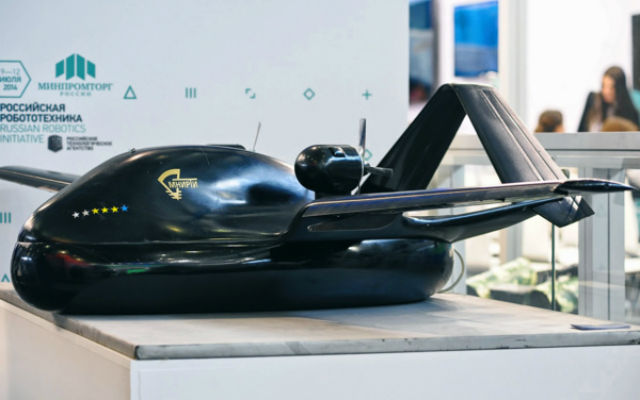Russia’s state-owned Rostec is reportedly developing a larger 2t variant of the Chirok amphibious hovering unmanned air vehicle that it revealed in 2014.
Rostec subsidiary United Instrument Manufacturing originally revealed a scaled down model of the 700-750kg (1,540-1,650lb) variant of the Chirok during the Innoprom exhibition in Russia in 2014, but Russian state media has reported that a larger 2t variant is in the works.
"At the moment, a theoretical study of the elements of an apparatus weighing over 2t, built on the basis of the 750kg Chirok UAV has already been carried out,” a United Instrument Manufacturing spokesperson told local press, according to the Sputnik state news agency. “It uses all the same technology, but in a number of areas the 'Big Chirok' will exceed its 'little brother'."
Rostec claimed in January that a full-sized demonstrator of the smaller Chirok was ready and preparing for flight tests, which are believed to be due to begin in summer 2015.

Rostec
A cushioned landing system enables the Chirok UAV to land on most surfaces, and a larger payload would allow the larger Chirok to take on the role of a helicopter in transporting cargo, it has been suggested.
The company says that the small Chirok has a 10m (33ft) wingspan, and while the top fuselage is made of all-composite carbon, it only says that the air cushion is made of a “super-modern material” that is “based on Russian know-how”.
Applications for the UAV include land and maritime surveillance and cargo transport, as well as reconnaissance and offensive operations – with the UAV acting as a combat vehicle with precision-guided weapon integration for the military.
A full-sized model of the smaller Chirok is expected to be revealed during the MAKS exhibition in Moscow in August 2015 and serial production will begin in 2016. After the smaller variant is tested, it is understood that this will then allow for a prototype of the larger variant to be approved.
Source: FlightGlobal.com






















